Flower
Collection In the Clearing
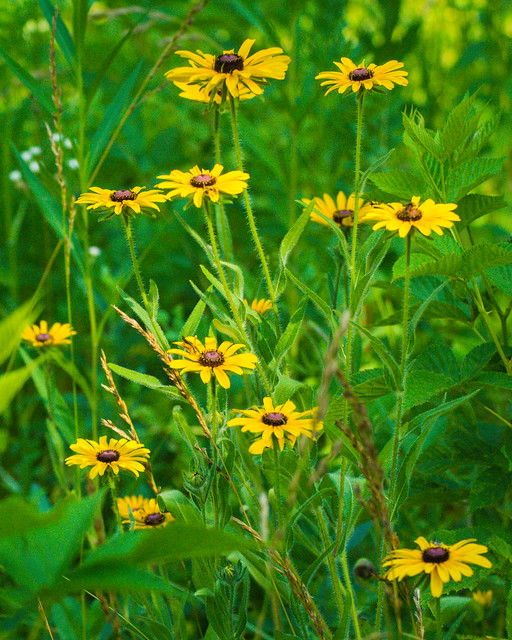 Hiking through the woods of northwest Missouri, I came across a clearing with a delightful arrangement of wildflowers.
Hiking through the woods of northwest Missouri, I came across a clearing with a delightful arrangement of wildflowers.
When I’m photographing flowers I normally move in closer and focus on a particular bloom or two. I snapped some of those images too, of course. However, for this collection, I thought a more distant perspective was worthwhile; where you can see them in their natural state, growing wild and free among the other native grasses and plants .
You can view them in much greater detail by clicking on the photograph. When you do, a larger, full-screen version of this photo will open in a new browser tab.
All of the photos I post are available for purchase. If you’d like to buy one, click on the blue “Buy this Online” bar below for a variety of print and frame options or contact me for digital purchase and licensing options.
Hello Wild Yellow
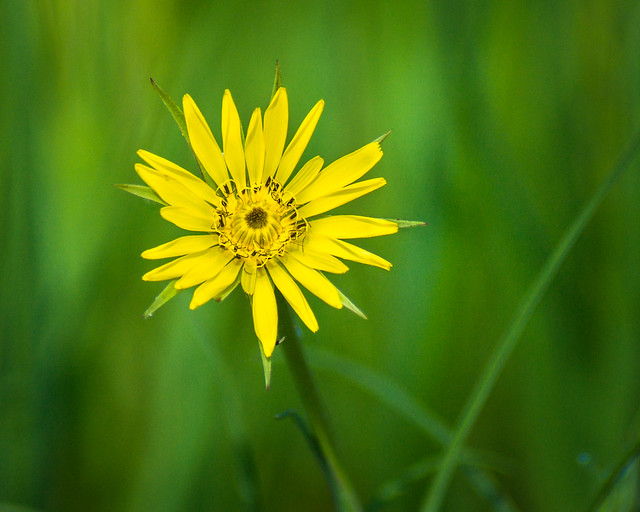 This yellow wildflower found a place in a woodland clearing to enjoy the warm, afternoon sun.
This yellow wildflower found a place in a woodland clearing to enjoy the warm, afternoon sun.
I usually try to offer some info on the flowers I post – at least the name of the flower. In this case, I don’t know what this one is called. I spent a good deal of time searching the web and a wildflower field guide but couldn’t come up with a good match. If you know, definitively, what this flower is, let me know. I photographed this bloom on a trail in northeast Wisconsin.
Update: With the help of some online friends I’ve discovered this flower is known locally as Goat’s Beard. Wikipedia also lists a variety of other names that are used for this plant…Tragopogon dubius, yellow salsify, western salsify, western goat’s-beard, wild oysterplant, yellow goat’s beard, common salsify and salsify.
You can get a larger, more detailed view of this flower by clicking on the photo.
All of the photos I post are available for purchase. If you’d like to buy one, click on the blue “Buy this Online” bar below for a variety of print and frame options or contact me for digital purchase and licensing options.
Gold In the Marsh
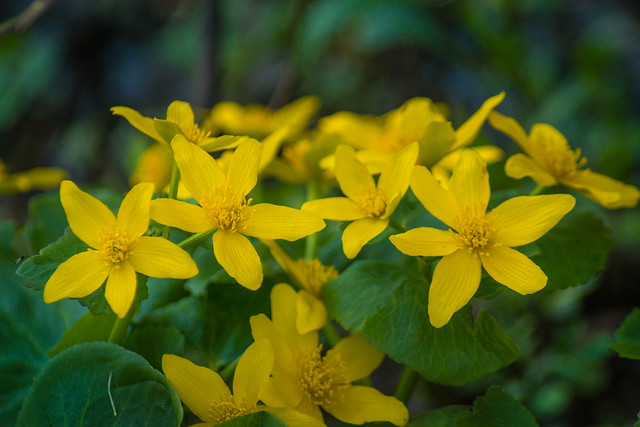
These yellow wildflowers are known locally as Marsh Marigolds. They can be found in ditches, wet woodlands and marshes. We found these…and a whole bunch more…in some soggy areas in the woodlands of northeast Wisconsin.
As I mentioned, we call them marsh marigolds in this area. Their botanical name is caltha palustris but they are known by a unbelievable variety of other names around the world. According to Wikipedia, the second most common name is kingcup. After that, they are also called brave bassinets, crazy Beth, horse blob, May blob, mare blob, boots, water boots, meadow-bright, bullflower, meadow buttercup, water buttercup, soldier’s buttons, meadow cowslip, water cowslip, publican’s cloak, crowfoot, water dragon, drunkards, water goggles, meadow gowan, water gowan, yellow gowan, goldes, golds, goldings, gools, cow lily, marybuds, and publicans-and-sinners. The common name “marigold” refers to its use in medieval churches at Easter as a tribute to the Virgin Mary, as in “Mary gold”.
All of the photos I post are available for purchase. If you’d like to buy one, click on the blue “Buy this Online” bar below for a variety of print and frame options or contact me for digital purchase and licensing options.
Interloper
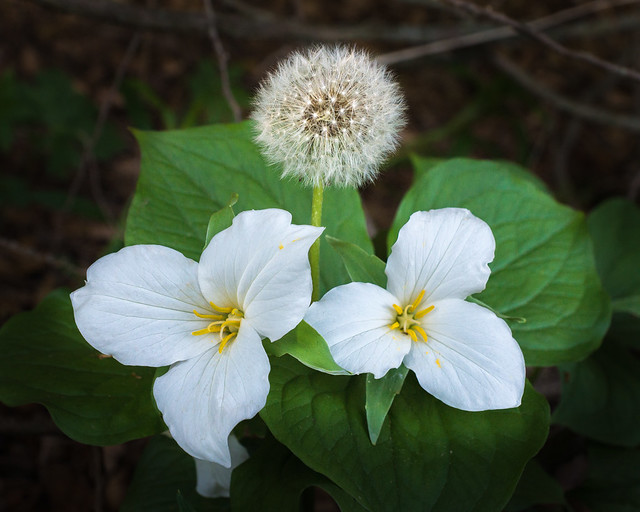
in·ter·lop·er
The dandelion is clearly the interloper here, inserting itself among the trilliums. These wildflowers were photographed on a recent hike in the woodlands of northeast Wisconsin.
I tried to capture the purity and details in the petals of the trillium blooms. The dandelion seemed to be photobombing. If you look closely, I think you can see a sly smirk on the dandelion’s face.
In any case, you can see all of the detail better by viewing the larger version. To do that, simply click on the photo.
All of the photos I post are available for purchase. If you’d like to buy one, click on the blue “Buy this Online” bar below for a variety of print and frame options or contact me for digital purchase and licensing options.
The Daffodil Patch
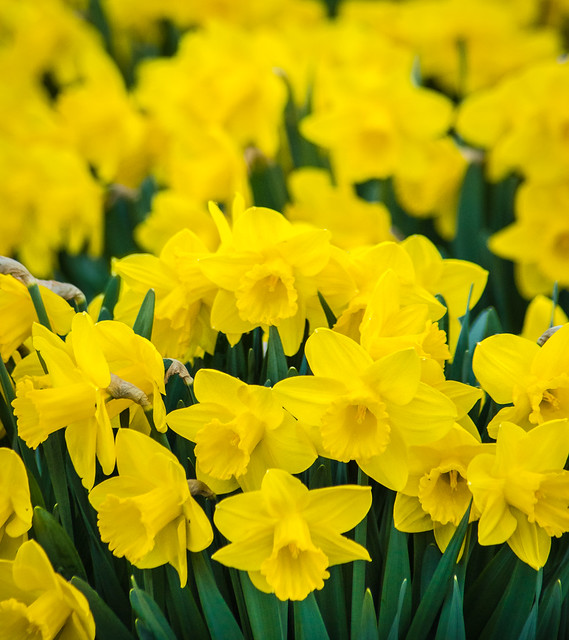 Daffodils are always a cheerful delight. Though short-lived, they are bright and vigorous springtime bloomers.
Daffodils are always a cheerful delight. Though short-lived, they are bright and vigorous springtime bloomers.
This particular patch is one of my favorite. Each spring, those driving north through Algoma,WI on highway 42 will find this plentiful display of yellow daffodils on the right side of the road, just before you descend the hill on the south side of town. My thanks and compliments to the homeowner who provide these well-cared-for beauties.
The daffodil is of the Narcissus genus – predominantly spring perennial plants in the Amaryllidaceae (amaryllis) family. Those in the Narcissus classification are easy to identify by their flowers with six petal-like tepals surmounted by a cup- or trumpet-shaped corona. According to Wikipedia, historical accounts suggest narcissi have been cultivated from the earliest times, but became increasingly popular in Europe after the 16th century and by the late 19th century were an important commercial crop centered primarily on the Netherlands. Today narcissi are popular as cut flowers and as ornamental plants in private and public gardens.
Like other members of their family, narcissi produce a number of different alkaloids, which provide some protection for the plant, but may be poisonous if accidentally ingested. This property has been exploited for medicinal use in traditional healing and has resulted in the production of galantamine for the treatment of Alzheimer’s dementia. Long celebrated in art and literature, narcissi are associated with a number of themes in different cultures, ranging from death to good fortune, and as symbols of spring. The daffodil is the national flower of Wales and the symbol of cancer charities in many countries.
You can view a larger version of this image by simply clicking on the photo.
All of the photos I post are available for purchase. If you’d like to buy one, click on the blue “Buy this Online” bar below for a variety of print and frame options or contact me for digital purchase and licensing options.
Heart On A String
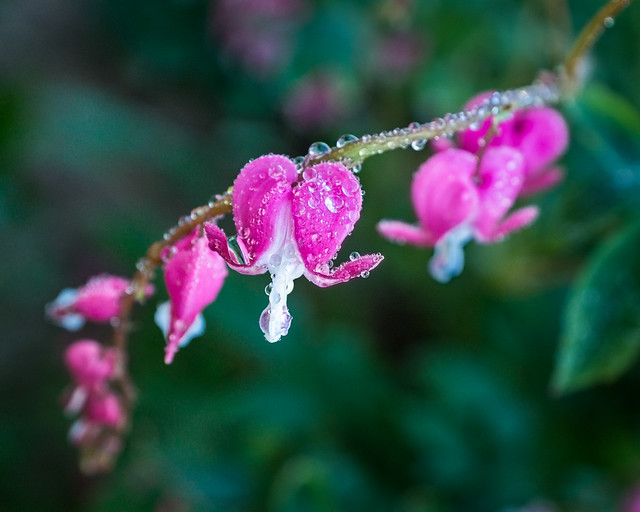
One of the most unique of flowers, this is the bleeding heart. It’s sparkling with moisture from a springtime rain.
The bleeding heart plant (lamprocapnos spectabilis) is native to China, Korea, Japan and Siberia. I was surprised to find out it is in the poppy family. It was brought to the west in the 1840s by the famed Scottish plant hunter, botanist Robert Fortune. It is prized by gardeners for its heart-shaped pink and white flowers that bloom in spring and early summer.
You can view a larger, more detailed version of this image by clicking on the photo.
All of the photos I post are available for purchase. If you’d like to buy one, click on the blue “Buy this Online” bar below for a variety of print and frame options or contact me for digital purchase and licensing options.
Wild Geranium Family Portrait
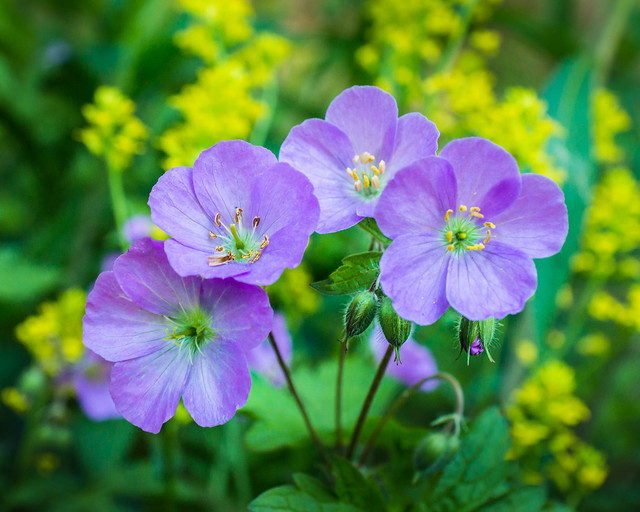
On a recent woodland hike I found this nice grouping of Wild Geraniums. It reminded me of a family portrait…parents and children…including little buds.
In the interest of full disclosure, I altered the background. There were some small, yellow wildflowers (weeds) growing a few feet away. I snapped off a stem of them and placed it behind my subjects to add a little more color and variety to the image.
As I often remind people, I operate as an artist not a photo journalist. Most images I post are true to the original scene. However, on occasion, I may add or subtract elements to suit my artistic vision. Most times, it’s done digitally. In this case, a little impromptu, on-site, floral arrangement.
You can get a better view by clicking on the photo. That will open a full-screen version in a new browser tab.
All of the photos I post are available for purchase. If you’d like to buy one, click on the blue “Buy this Online” bar below for a variety of print and frame options or contact me for digital purchase and licensing options.
A Wet Spring
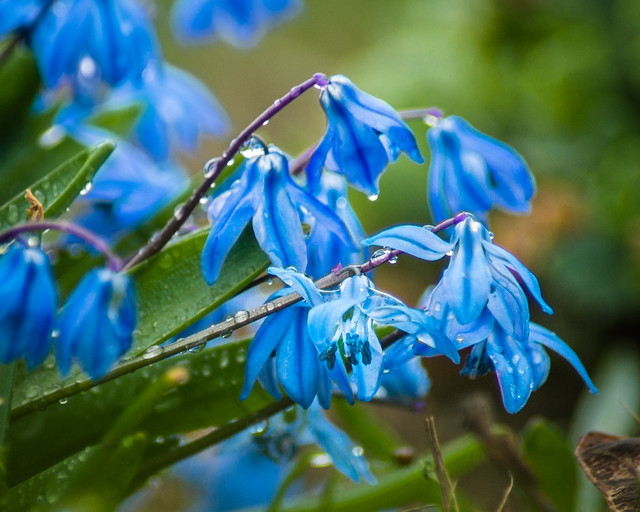
These little beauties seem drunk on spring; a bit disheveled as they lounge, casually soaking up the moisture of an early morning rain.
These very tiny, delicate flowers are known as “Spring Beauty” and “Siberian Squill.” Their formal name is Scilla Siberic. They are the very first of the flowers in our yard to appear in the spring.
Scilla Siberic is native to southwestern Russia, the Caucasus, and Turkey. Despite its name, it is not native to Siberia.
You can view a larger image of these tiny flowers by clicking on the photo.
Woodland Whites
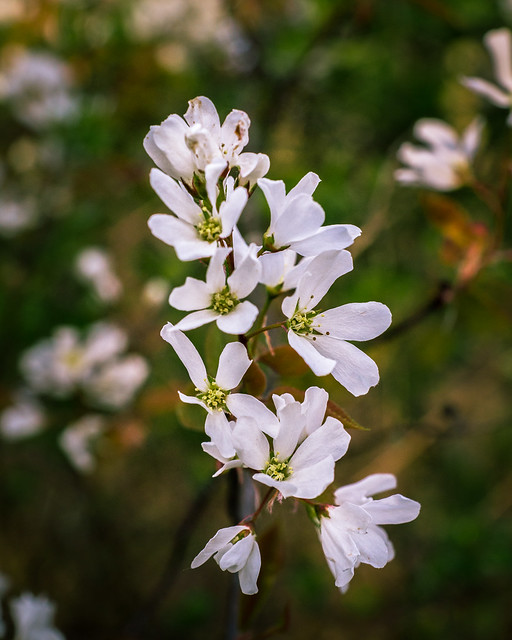 The trees are coming to life after a long winter’s nap. They seem to do so with great deal of grace and exuberance!
The trees are coming to life after a long winter’s nap. They seem to do so with great deal of grace and exuberance!
These are the blooms from a flowering tree we spotted on a springtime walk through the woods. The delicate flowers were fresh and plentiful but, I’m sure, will be short lived.
You can get a better look at these blooms by viewing the larger version. Just click on the photo.
All of the photos I post are available for purchase. If you’d like to buy one, click on the blue “Buy this Online” bar below for a variety of print and frame options or contact me for digital purchase and licensing options.
Spring Bloomers
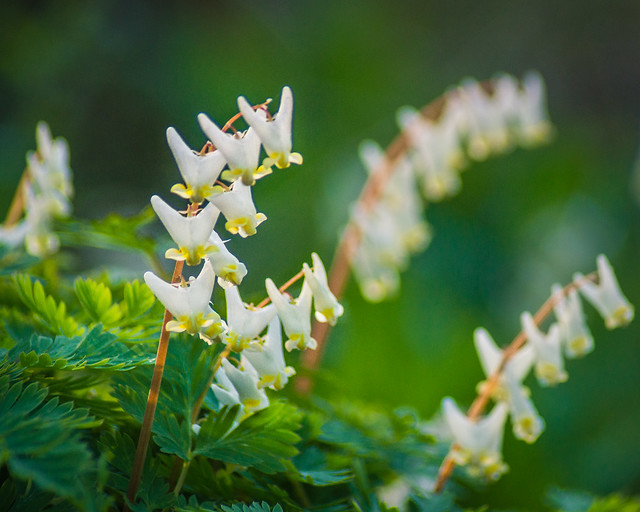
These are one of my wife’s favorite wildflowers. She can’t help but comment on how adorable they are. They are Dutchman’s Breeches. (Dicentra Cucullaria)
These unique wildflowers get their name from the shape of the flowers. They resemble pantaloons hanging upside down and slightly inflated. The yellow adornment at the bottom of the flower resembles a belt on the pantaloons. (I think they look more like old-fashioned bloomers. That’s why I titled this image, Spring Bloomers. That, and because they bloom very early in the spring.)
In our area they begin to show up in early May. The flowers are approximately 3/4 inch in length and white to pinkish in color. The blooms dangle down from thin stalks rising from the lush green plant. According to Wikipedia, Native Americans and early white practitioners considered this plant useful for syphilis, skin conditions and as a blood purifier.
You can view a larger version of this image simply by clicking on the photo.


















































